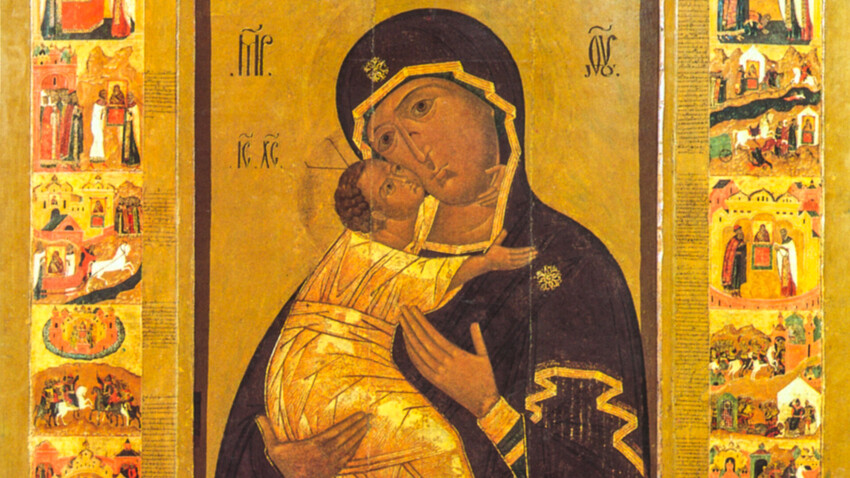
Almost every Russian church has a recognizable image. The Mother of God holds the infant Christ in her arms, who leans his cheek to her bowed head. Such an image is called the ‘Eleusa’ iconographic type or Virgin of Tenderness.
Although there are many such icons in Russia, it can be considered that their original source is one - the ‘Vladimir Icon of the Mother of God’. According to legend, the first such image was painted by Evangelist Luke himself and, in the 5th century, it went from Jerusalem to Constantinople.
Around the year 1130, a copy of Luke's Virgin image was brought from Byzantium to Kievan Russia as a gift to the Russian prince Mstislav Monomakh. The first home of the icon was a monastery in Vyshgorod, not far from Kiev. There are legends about the many miracles that happened with its appearance.
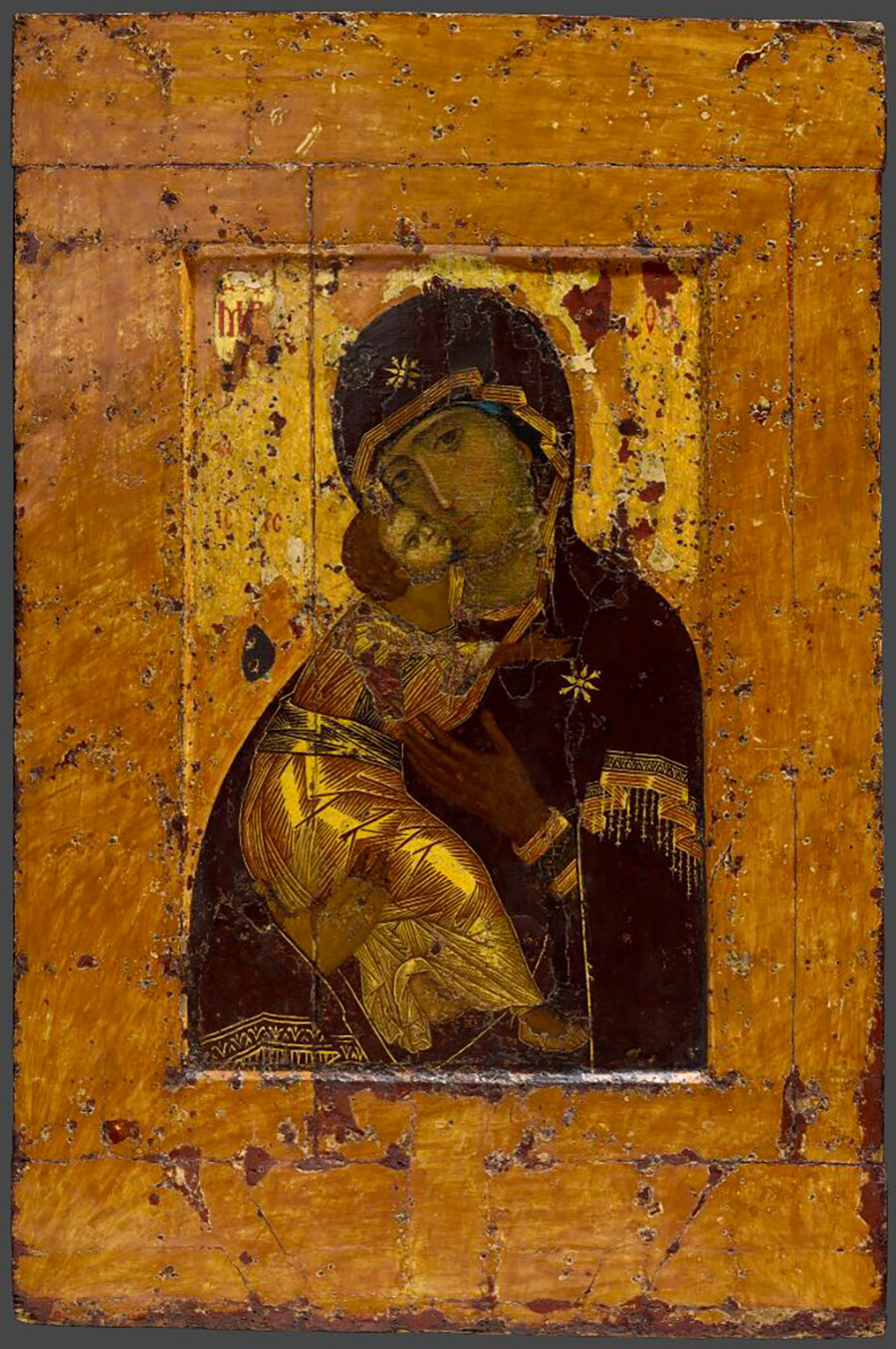
‘Vladimir Icon of Our Lady’. The 12th century
Tretyakov galleryIn 1149, Prince Yuri Dolgoruky (also known as the founder of Moscow) became the ruler of Kiev. And his son, Prince Andrew, was tasked with ruling Vyshgorod. He observed the miracles that the icon spread. And, in 1155, against his father's will, Andrei went to rule in the north-eastern lands, the so-called Vladimir-Suzdal Russia. And he took the wonderworking icon with him (probably on his own will).
According to legend, the icon healed the sick and performed miracles during the long journey from Kiev to the north. And, when there were only 10 kilometers left to the city of Vladimir, the horses stood up and did not want to go any further. Prince Andrei and his suite had to spend the night right there and, at night, the Mother of God appeared to them. In honor of this sign, a monastery and the village of Bogolyubovo (literally “loving God”) were both founded on that spot, which subsequently became the residence of the prince. And the prince was nicknamed Andrei ‘Bogolyubsky’ (literally “the one who loves God”).
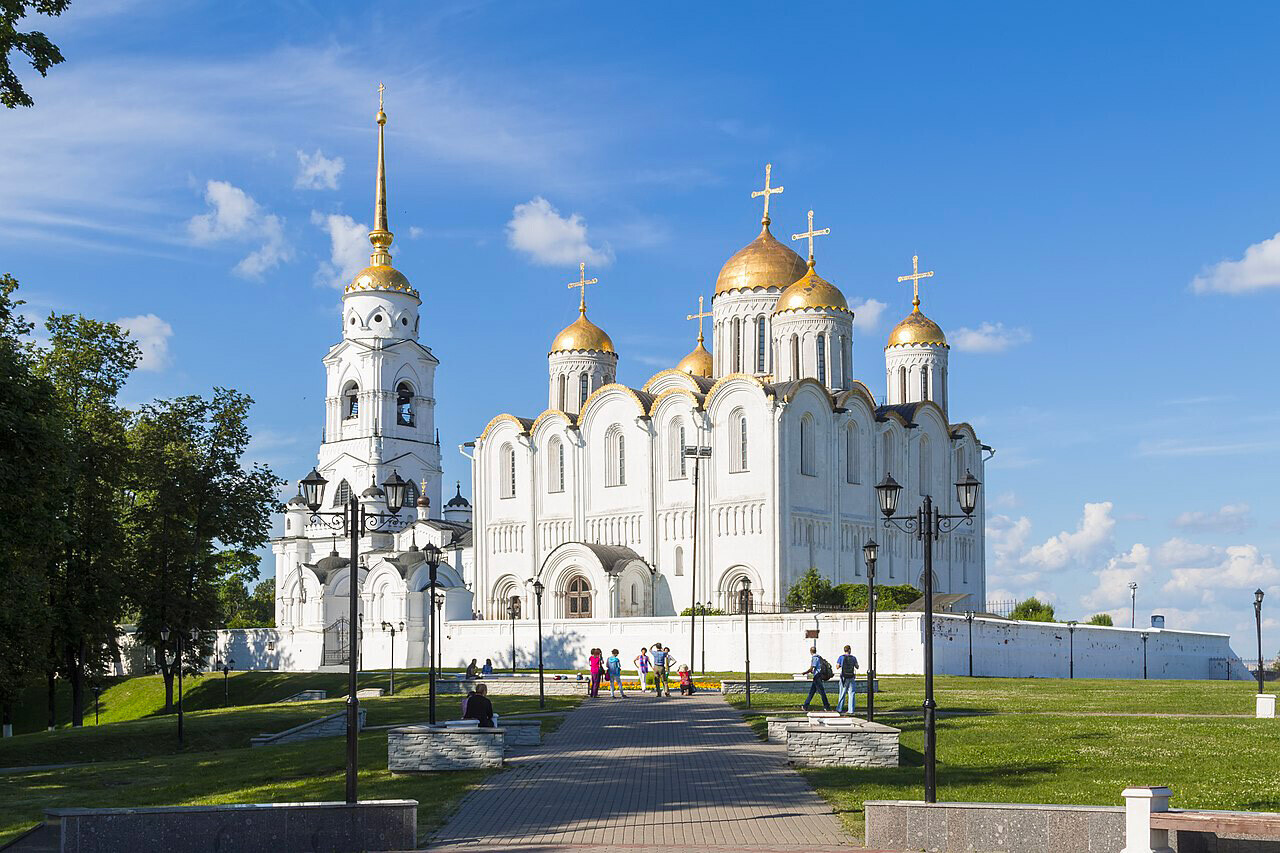
Assumption Cathedral in Vladimir
Mike1979 Russia (CC BY-SA)In the city of Vladimir, Andrei built the Assumption Cathedral, where he placed the miracle-working icon in the most honorable place. This is how it got its name ‘Vladimir Icon of the Mother of God'. The prince ordered a precious ‘riza’ (a metal cover) for the icon, prayed in front of it on especially important days and even took it with him on military campaigns. Since then, the Vladimir-Suzdal principality reached its highest economical and political position in Russia.
During the medieval Mongol invasion, the cathedral in Vladimir was plundered, but the icon was not damaged, further convincing the devotees of its sacredness. In 1395, Grand Prince Vasily I ordered the revered icon to be transported to Moscow to protect the city from Timur's invasion. And, indeed, for no apparent reason, the commander deployed his troops without reaching Moscow.
This event was perceived by the Muscovites as a sign of special intercession of the Mother of God, so, as a result, from the middle of the 15th century, the icon finally took its place in the Assumption Cathedral of the Moscow Kremlin.
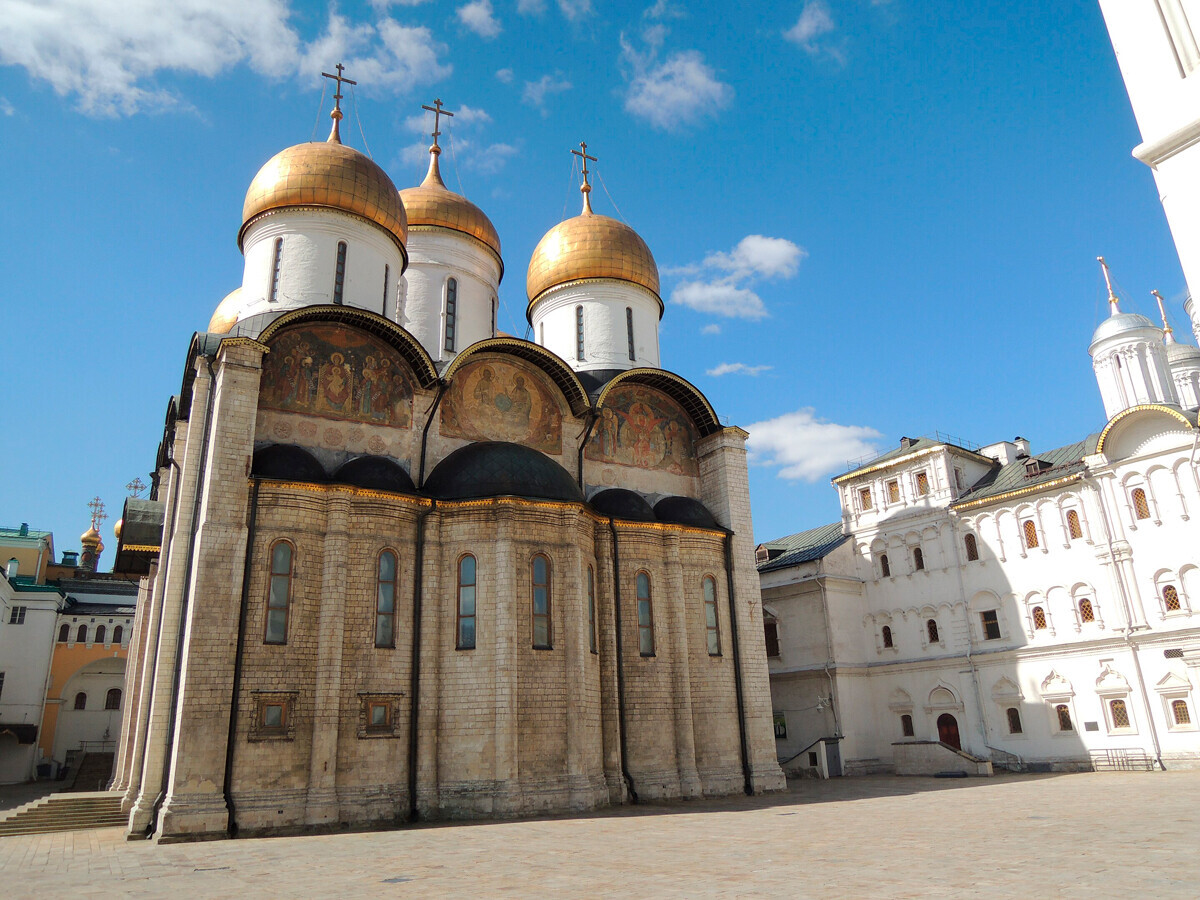
Assumption Cathedral of the Moscow Kremlin
Wikipedia/ShakkoTsar Ivan the Terrible prayed in front of the icon and most of the Russian monarchs were crowned with it. The icon remained in the Moscow Kremlin until the 1917 Bolshevik Revolution, when it was taken away for restoration and then transferred to the museum fund. Since 1930, it has been kept in the Tretyakov Gallery (and, since the 1990s, in the gallery’s house church of St. Nicholas in Tolmachi).
When the relic moved to Moscow, a highly artistic copy was painted for the Assumption Cathedral in Vladimir. The new icon was created around 1408 and its drawing is attributed to famous icon painter Andrei Rublev, who also painted the walls of the cathedral itself.
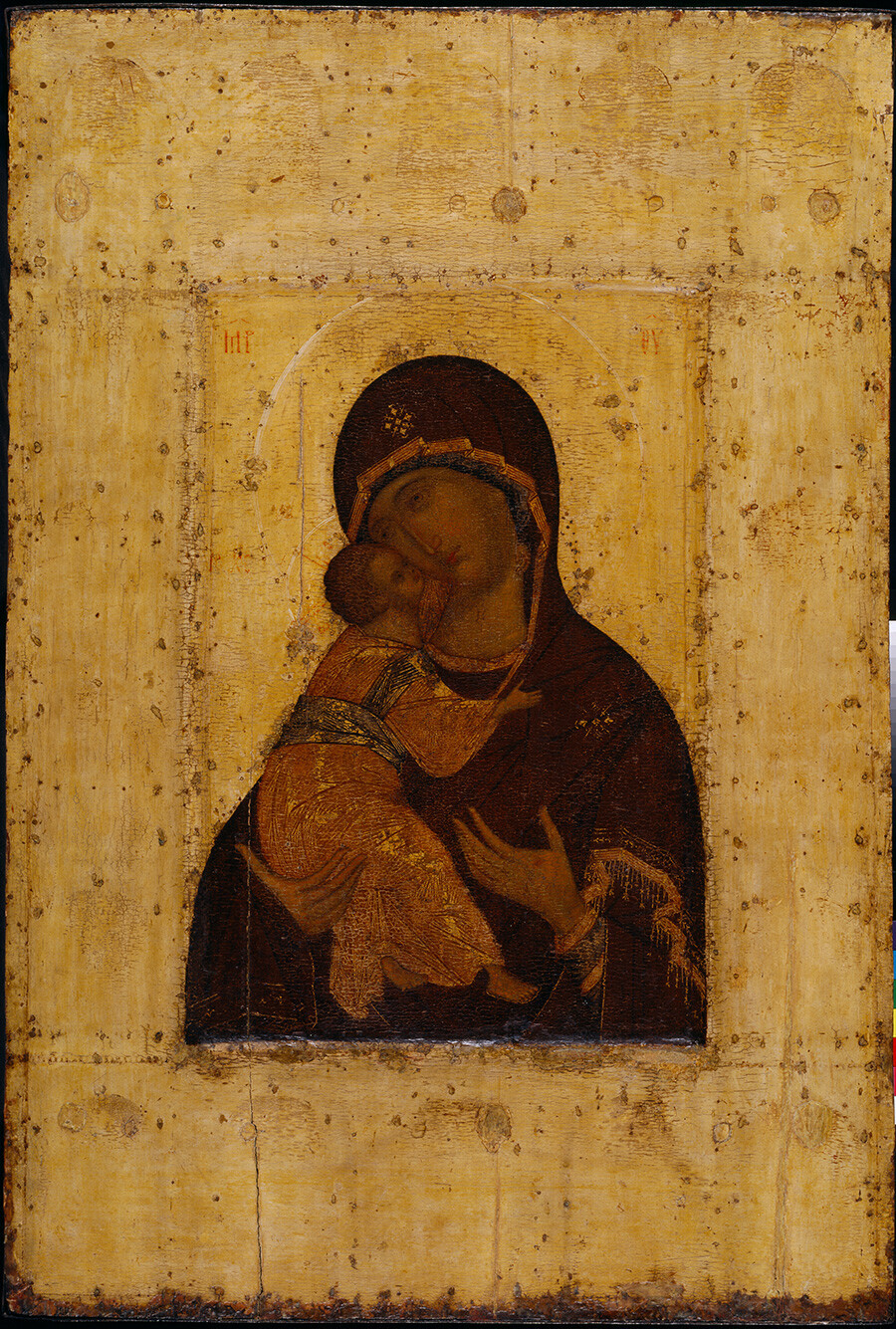
Our Lady of Vladimir. Early 15th century. Attributed to Andrei Rublev
Vladimir-Suzdal museum-reserveOver time, a whole cult developed around the Vladimir icon. More than once, as a gesture of gratitude for the icon's intercession, rich people and Russian rulers presented new precious frames for the icon. One of the oldest surviving ones dates back to 1410-1411. Metropolitan Photios ordered the Greek masters to create a gold frame. And they depicted 12 Gospel feasts on the margins.
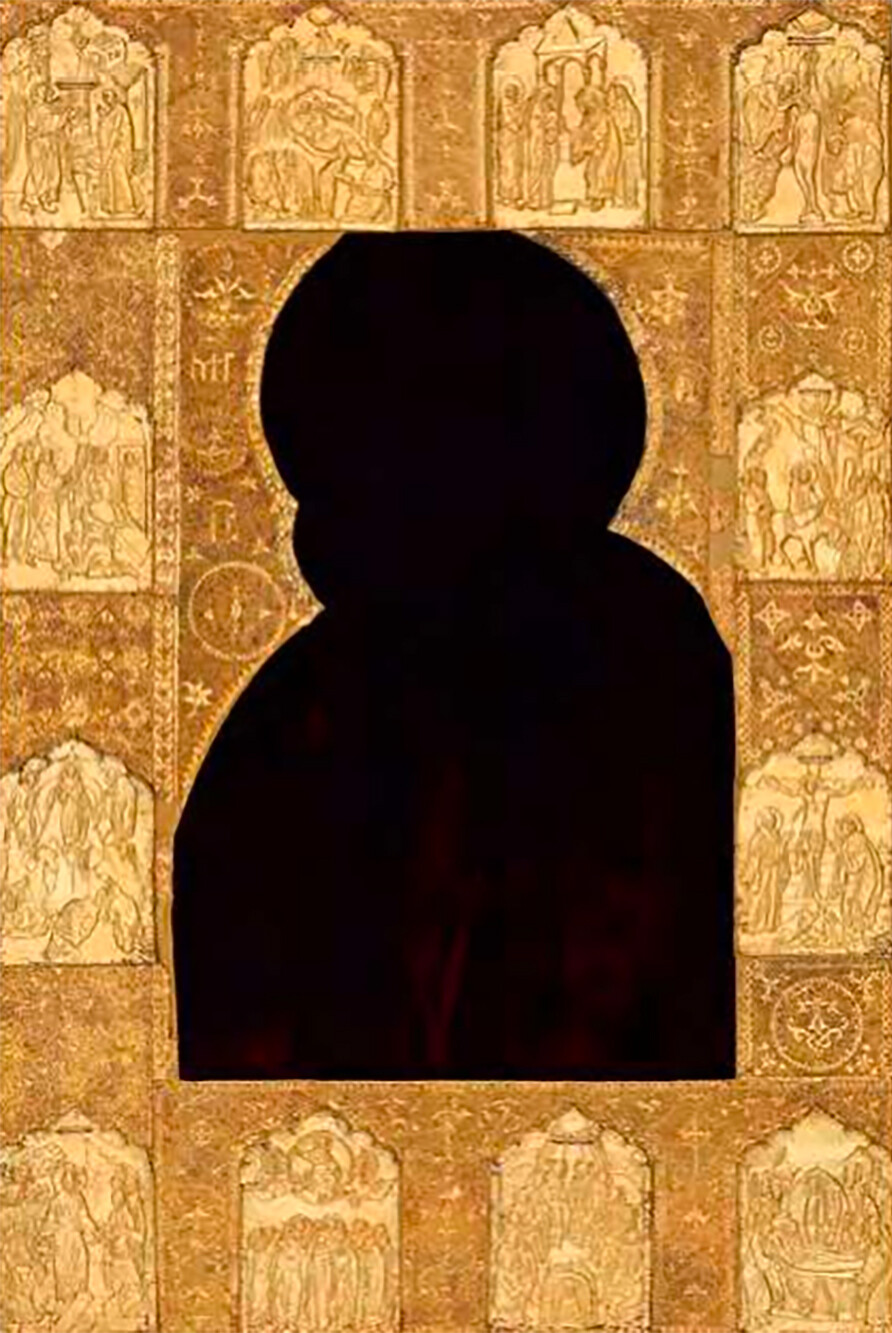
Gold frame of 1410-1411 with Gospel feasts on the margins
Moscow Kremlin MuseumsIn 1514, Grand Prince Vasily III ordered a replica of the miracle-working icon. The new image accurately reproduces the size and pattern of the original 12th century one and the margins reproduce the subjects of feasts from the very same golden frame of Metropolitan Photius. This new icon was usually used for outdoor processions during bad weather instead of the ancient icon. And, when the original relic was taken to the museum during the Soviet era, this new image took its place in the Kremlin Cathedral.
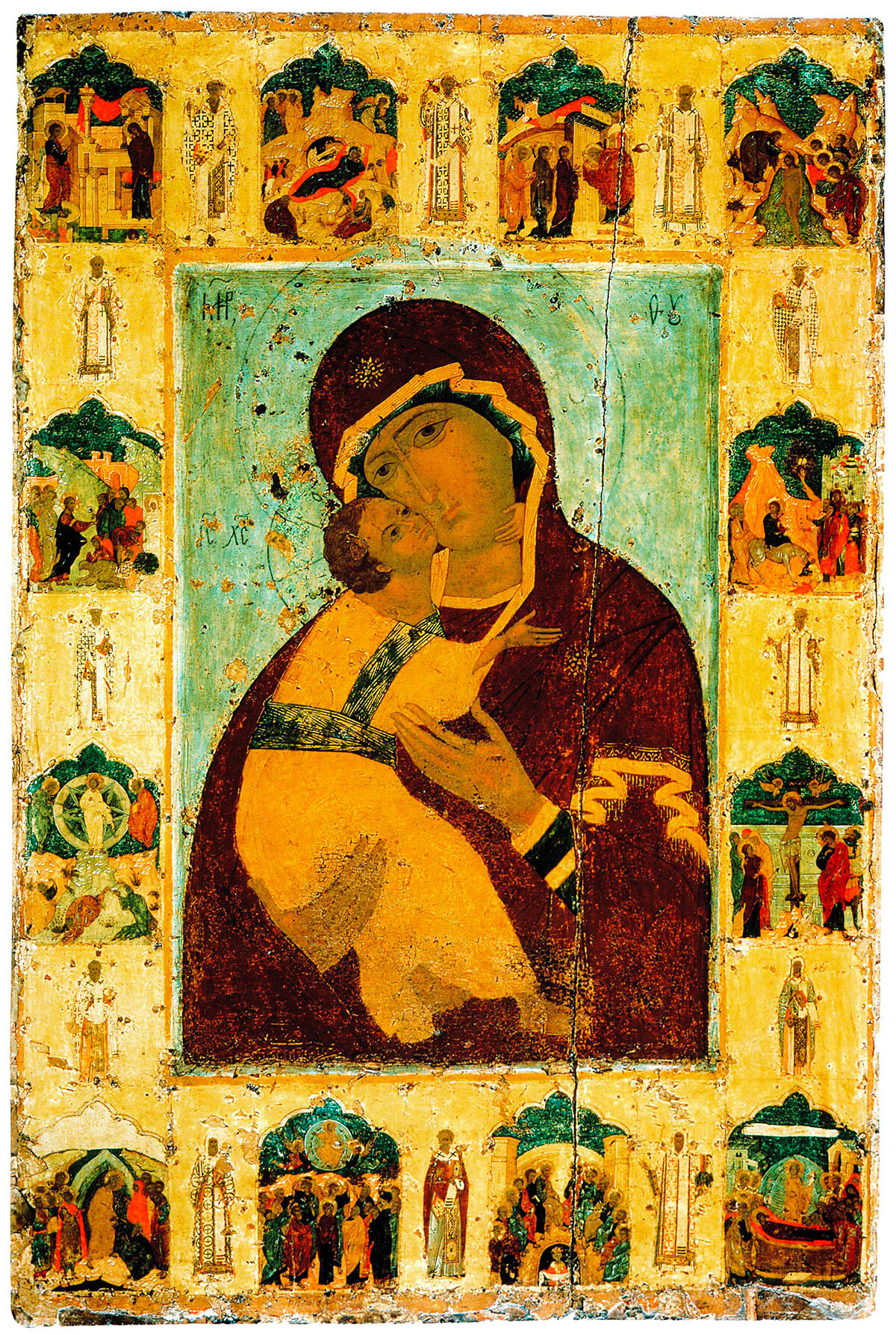
Our Lady of Vladimir with Gospel feasts on the margins, 1514
Moscow Kremlin MuseumsThe image of Our Lady of Vladimir acquired a special historical importance. And it not only became a subject of copying, but an independent object of iconography. That is, the image of the icon itself began to appear on other religious paintings.
One of the most striking examples is a 17th-century icon, on the margins of which the legendary history of the icon is illustrated in detail, in the manner of the saint's life.
The iconographer reproduced how the icon was painted by the Apostle Luke himself and how the Mother of God herself blessed the image and how the icon was brought to Russia from Byzantium. The many miracles performed by the icon, the construction of the Assumption Cathedral and how the icon saved Moscow from Timur's invasion are also depicted.
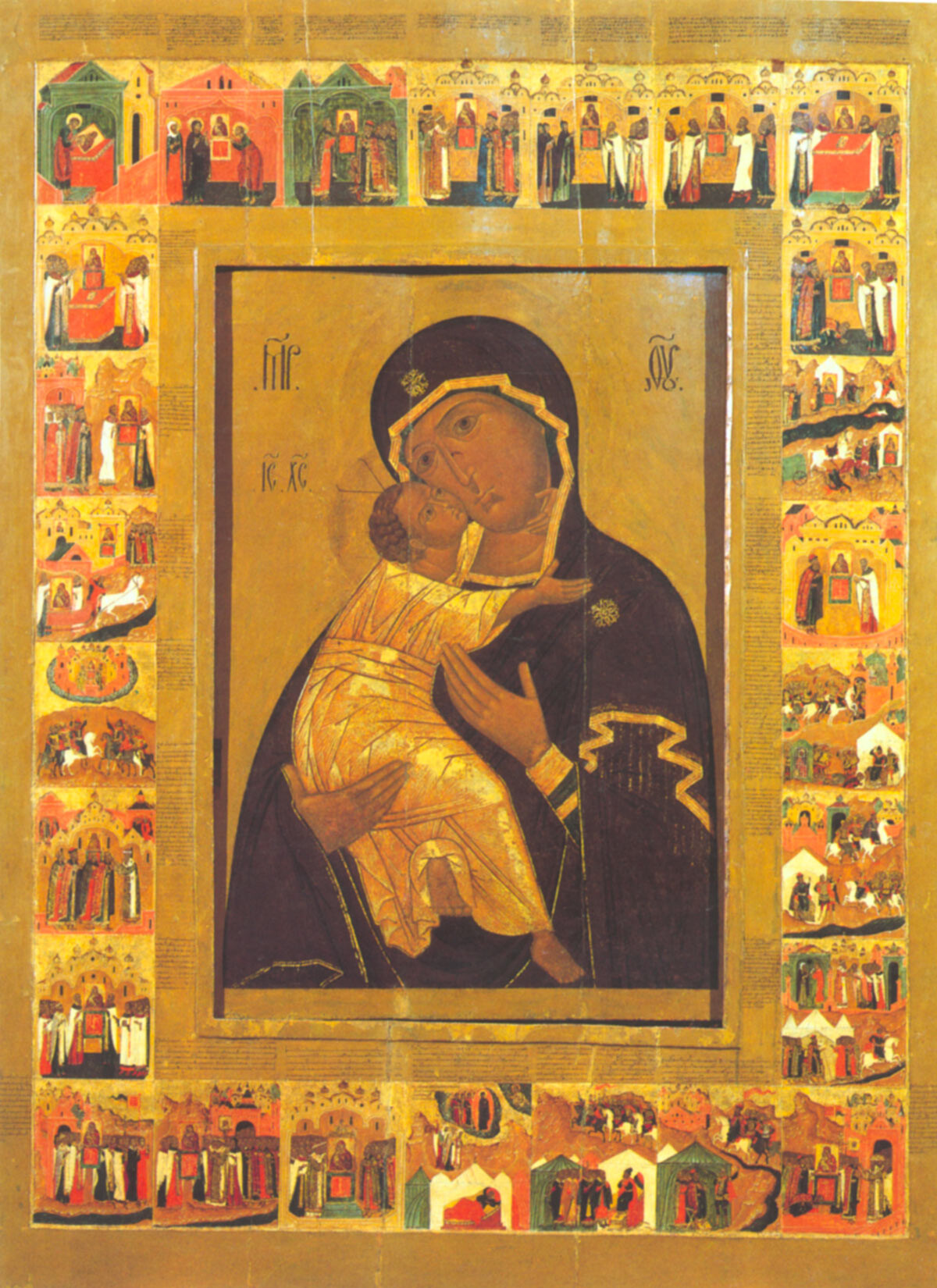
Our Lady of Vladimir, with stamps of the Tales of the icon of Our Lady of Vladimir. Second quarter of the 17th century
Moscow Kremlin MuseumsMost likely, such an unusual icon was ordered by Patriarch Joseph in 1642 as a sign of gratitude that he was chosen to become a patriarch in front of the image of Our Lady of Vladimir.
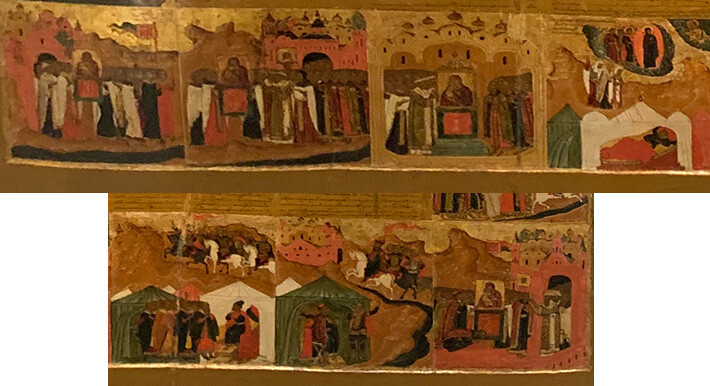
Fragments of the icons with the protecting from Timur’s invasion
Moscow Kremlin MuseumsIn fact, this icon symbolically unites not just the history of Our Lady of Vladimir, but the 1,000-year history of all of Orthodox Russia.
This and other icons, including the ‘Vladimir Icon of the Mother of God’ by Andrei Rublev, can be seen at the joint exhibition of the Moscow Kremlin Museums and the Vladimir-Suzdal Museum-Reserve called ‘Russian Phoenix. Suzdal Land’. It's on display in the Suzdal Kremlin until October 1, 2024.
Dear readers,
Our website and social media accounts are under threat of being restricted or banned, due to the current circumstances. So, to keep up with our latest content, simply do the following:
If using any of Russia Beyond's content, partly or in full, always provide an active hyperlink to the original material.
Subscribe
to our newsletter!
Get the week's best stories straight to your inbox